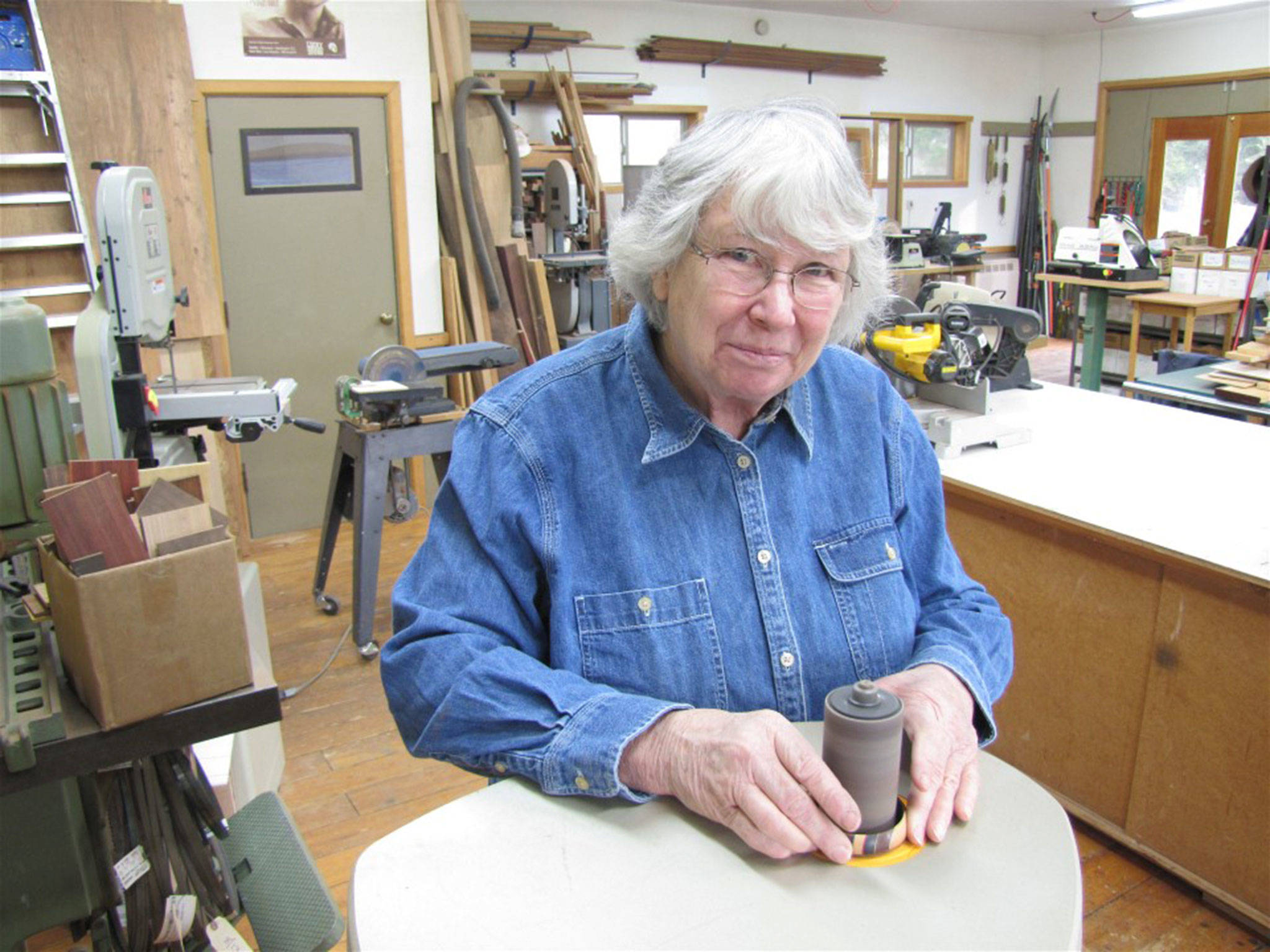Whether you like bead work or needlepoint, artist Martha Collins could have the right piece of wood jewelry or decor for you.
Since moving to Sequim in 1984, Collins continued to master her wood art such as a helical mosaic bracelet or a small bowl. Her work doesn’t require a dizzying amount of work with tweezers, but rather an intricate process of laminating, slicing with a band saw, re-orienting, re-laminating, and lathe turning.
“The interplay of these components is revealed and accentuated in the lathe turning,” she said.
An item like a bracelet or bowl can hold up to 1,200 pieces of wood, she said, giving the appearance of beads or needlepoint.
Pictures may not do her work justice, she says.
“Not until you hold it and see it, will you understand,” Collins said. “It shows you something you’ve never seen before.”
Locals get a chance to see Collins teach and some of her art at 9:30 a.m. Tuesday, Jan. 30, for the Strait Turners’ monthly meeting at the Gardiner Community Center, 980 Old Gardiner Road.
Recently, Collins has been making an effort to teach or speak more after years on the road for some of the biggest art shows in the nation. At her busiest schedule, she attended 16 shows a year along with hosting instructional sessions.
“One of reasons I want to teach is because in our world there’s so much technology that people forget the joy of working with your hands,” she said.
Along with private lessons at her Lost Mountain Road shop in Sequim and lectures at various events, Collins continues to teach at the Port Townsend School of Woodworking too.
Crafting a career
Collins’ interest in woodworking began in Michigan where under Title IX she became the state’s first certified female cabinetmaker.
Since then, she feels she’s created a name for herself.
“What I do is very much a niche because of the amount of steps I take and because of hand dying the veneer,” she said.
Discovering the process for making helical mosaic chevron bracelets was a “what if” moment among colleagues, she said.
While in Michigan, she and others in the shop took a piece of rosewood veneer and shifted the pieces, laminated them and turned them.
Collins said the shop’s owner said it looked like his own grain of wood and shortly thereafter another apprentice asked “what if” they used laminated material. She’s used a similar process ever since then.
After building her home and shop in 1983, Collins moved to Sequim with her family the following year and went full-time producing her distinct bowls, tableware, and jewelry in the late 1990s while traveling to art shows across the nation.
Nuts and bolts
To create one original block for her many creations, Collins chooses from 40 different woods she purchases from sustainable companies in Port Townsend or Portland.
She’ll laminate 12-13 different species of hardwoods with each piece 1/4-inch by 3.5 inches by 16 inches long.
Collins said it takes her time to choose the right order for the woods before adding maple veneer and dry clamping it. Using jewelry epoxy, she laminates the block together and clamps it together. Once cured, Collins said she squares the block up for slicing at quarter-of-an-inch within 0.002 of an inch all four corners.
Once the edges are right and shifted into the desired pattern, Collins takes them to the lathe to be turned into bowls or bracelets or other items before finishing them later with epoxy or lacquer.
Collins said similarly to a baker using flour and water, “what comes out all depends on how you cut it.”
Over the years, she said one of her challenges has been pricing her items but she’s made simpler designs of her bowls and bracelets in recent years.
“With me you don’t have to shell out big money for a Tesla. I also make a nice Chevy too,” she said.
Collins has diversified her output as well with bottle toppers, earrings, spice mills, remembrance boxes and more.
A full year
Collins said she continues to submit work to juried art shows and plans to exhibit at some of the Northwest’s bigger events such as the RAGS Wearable Art show in Tacoma March 9 – 11 and both the Best of the Northwest in Seattle in March and the fall, while going to shows in San Francisco, New York City and Boston later in the year.
She anticipates her work on display in several shows too including the Port Townsend’s Northwind Gallery’ “Women in Wood” show in April, and the American Association of Woodturners’ “Turnabout: Women at the Lathe,” at the Appalachian Center for Craft in Smithville, Tenn., through March.
“I’m fortunate to have this career,” Collins said. “It’s been a real pleasure for me.”
For more information on seminars and purchasing Collins’ art, call 360-683-2678 or visit www.studiomarthacollins.com.
Reach Matthew Nash at mnash@sequimgazette.com.


